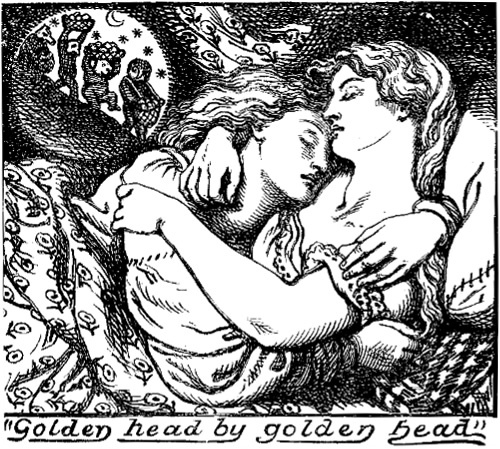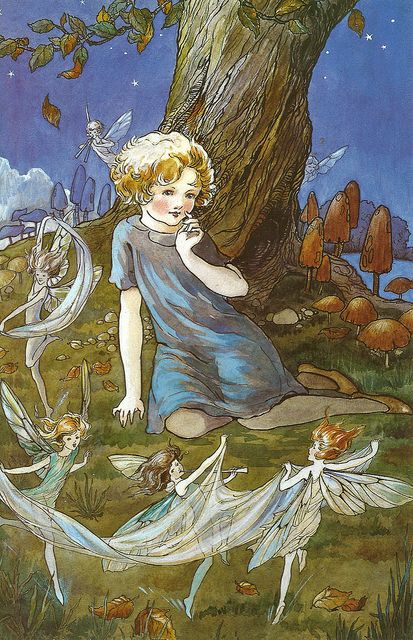
In a much earlier post on summoning spells, I examined some of the methods that have been used to bring fairies before you. During my researches, I’ve come across a few more, which are presented here now.
Broadly, there seem to be two ways in which it is possible to summon fairies into your presence. One involves the use of a crystal ball and the conjuring of the faery with the correct words; the other exploits the faeries’ own magic or glamour to override their invisibility and expose them to our view.
Crystal Balls
The first method was the one adopted by many magicians and seers, especially during the sixteenth and seventeenth centuries, when efforts to contact spirits of different kinds by these means seem to have been at their peak. One of the leading English practitioners was William Lilly, who describes some of the methods used in his History of His Life and Times. He tells us that he knew two skilled seers. One was a woman called Sara Skelhorn who practiced in the Gray’s Inn Road in London. She contacted beings she described as angels through her crystal ball and gained information from them. In fact, Sara seems to have been rather too good at this. Late in her life, she complained to Lilly how the angels wouldn’t go away, but followed her around her house until she was weary of their presence.
The other conjurer he knew was a woman called Ellen Evans, who summoned up the fairy queen using her ball and a summoning spell, that began “O Micol! O Micol! Regina pigmeorum veni…” (Micol, come, queen of the pygmies [fairies]). This line is evidently the start of a much longer invocation, and I have discussed before the sorts of lengthy charm that was usually required. You’ll also note that it seemed necessary to invoke the faes in Latin; I’ve examined the question of fairy language several times before- and there’s little basis for thinking they spoke as the Romans did- but Latin as a learned language seemed very suitable for these charms at the time.
Here’s an example summoning ritual from Percy’s Reliques (III, 263). It’s titled “an excellent way to get a fayrie.” :
“First, get a broad square christall or Venice glasse, in length and breadth three inches. Then lay that glasse or christall in the blood of a white henne, three Wednesdayes or three Fridayes. Then take it out and wash it with holy aqua [water], and fumigate it. Then take three hazle sticks, or wands, of an yeare groth ; pill [peel] them fayre and white ; and make them soe longe as you write the spiritt’s name, or fayrie’s name, which you call three times on every stick being made flatt on one side. Then bury them under some hill, whereat you suppose fayries haunt, the Wednesday before you call her: and the Friday followinge take them uppe and call her at eight, or three, or ten of the clocke, which be good planetts and houres for that turne ; but when you call be in cleane life and turne thy face towards the East, and when you have her bind her in that stone and glasse”
At this point Lilly goes on to warn readers that the spirits won’t appear for everyone. They prefer people of “strict diet and upright life,” which is what he means by his reference to “cleane life:” a ritual cleansing in advance is recommended. Moreover, even if they do appear, it will often transpire that the magician is not suited to the experience. As Lilly says, even those of undaunted character and firm resolution can be astonished and trembling “nor can many endure their glorious aspects.” However much you may desire to see the faery queen, therefore, the reality may be overwhelming.

Glamour
The second way to see fairies is to use their magic against them. A seventeenth century spell book in the Bodleian library in Oxford contains a variety of faery related spells, including ‘To call Oberon into a crystal stone’ but the one I wish to discuss is called ‘Experimentum optimum verissimum for the fairies.” It sets out a lengthy and complex procedure, which I reproduce for you here:
“In the night before the newe moone, or the same night, or the night after the newe moone, or els the night before the full moone, the night of the full, or the night after the full moone, goe to the house where the fairies mayds doe use and provide you a fayre and cleane buckett, or payle cleane washt, with cleere water therein and sett yt by the chimney syde or where fyre is made, and having a fayre newe towel or one cleane washt by, and so departe till the morning; then be thou the first that shall come to the buckett or water before the sonne ryse, and take yt to the light, that you find upon the water a whyte ryme, like rawe milk or grease, take yt by with a silver spoone, and put yt into a cleane sawcer; then the next night following come to the same house agayne before 11 of the clocke at night, making a good fire with sweet woods and sett upon the table a newe towel or one cleane washt and upon yt 3 fyne loaves of new mangett [fine wheat bread], 3 newe knyves with whyte haftes and a newe cuppe fulle of newe ale, then sett your selfe downe by the fyre in a chaire with your face towards the table and anonynt your eyes with the same creame or oyle aforesaid. Then you shall see come by you thre fayre maydes, and as they passe by they will obey you with becking their heads to you, and like as they doe to you, so doe you to them, but saye nothing. Suffer the first, whatsoever she be, to passe, for she is malignant, but to the second or third as you like best reache forth your hand and pluck her to you, and with fewe words aske her when she will apoynt a place to meete you the next morning for to assoyle such questions as you will demand of her; and then, yf she will graunt you, suffer her to depart and goe to her companye till the houre appointed, but misse her not at the tyme and place; then will the other, in the mean tyme whyle you are talking with her, goe to the table and eat of that ys ther, then will they depart from you, and as they obey you, doe you the like to them saying nothinge, but letting them depart quyetlye. Then when youre houre is come to meete, say to her your mynde, for then will she come alone. Then covenant with her for all matters convenient for your purpose and she wilbe always with you, of this assure yourselfe for it is proved, ffinis [the end].”
The process is reasonably straightforward, as you will have seen. You will need to have acquired some fresh fine loaves, some new ale, some clean buckets filled with clean water and clean towels, but none of these items ought to be too hard to come by. The tricky part is knowing whether a house is one “where the fairies mayds doe use,” in other words, a place that is frequented by female fairies on a regular basis. Provided that you’re sure you’ve correctly identified the place, everything else will apparently fall into place like clockwork.
How does this ritual work? Well, as fairy expert Katharine Briggs explained, the unspoken assumption lying behind it is as follows: overnight the fairies will enter the house to wash themselves and their children in the fresh water. As I’ve described before, fairy babies are anointed with an ointment that gives them their second sight and powers of glamour and (it seems) reinforces their immortal fairy nature. Some of this salve will, it seems, be washed off during the ablutions and it is this that forms the rime on the surface of the bucket. You then simply lift it off with your silver spoon and you have acquired the key to faery.
All that remains is to wish you good luck- and to remind you to read other postings discussing some of the potential downsides of any encounter. For a discussion of the summoning faeries for sexual purposes, see my Love and Sex in Faeryland, 2021 (Amazon/ Kindle)









































